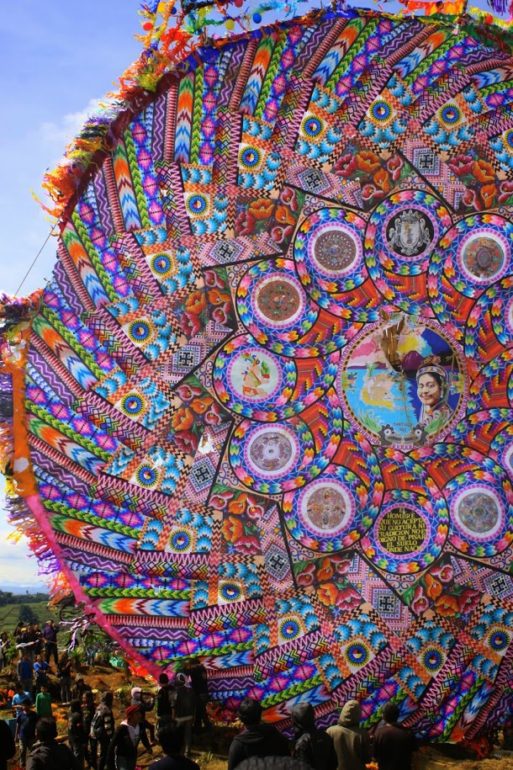
One of the giant kites made in Santiago, Guatemala, for the Day of the Dead.
Credit: Brianna Deutsch
Mexican celebrations around the Day of the Dead have become well-known throughout the world. Typically celebrated on November 1st and 2nd, the Day of the Dead, or Día de Muertos, is a time of celebrating life and death, remembering loved ones, and honoring cultural roots. During the Day of the Dead, the line between life and death is believed to be thin, and the spirits of the deceased may come back to walk upon the earth for those days. Scenes of families cleaning and decorating graves with marigolds, faces painted like “calaveras“ or sugar skulls, and household altars or “ofrendas” with photos of loved ones and pastries have become increasingly recognized, aided by movies like “Coco” and Mexican immigrants who bring their customs into new places.
But Mexico is not the only place that celebrates the Day of the Dead. Latin American countries from Mexico to Bolivia have their own customs, none more epic than the giant kites, or “barriletes gigantes” of Guatemala.
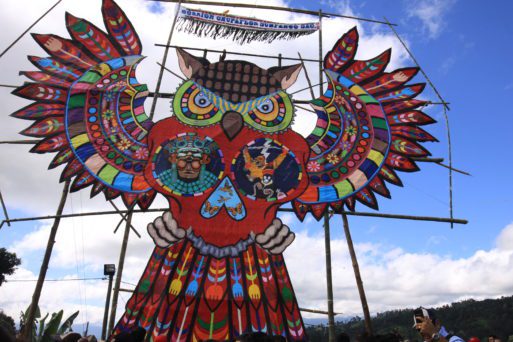
The giant kites often incorporate Mayan imagery. Owls are commonly associated with death in Mayan spirituality.
Credit: Brianna Deutsch
In Guatemala as in Mexico, the Day of the Dead offers an important time of year to commemorate deceased loved ones as a community. Graves are cleaned and adorned with pine needles and flowers, and families often have picnics graveside that day with the favorite food of the deceased. There is an air of festivity, with loud music, dancing, and kites being flown. The latter is done not just for the fun aspect though, but retains important cultural significance in Guatemala.
Throughout the country, small kites are flown on the Day of the Dead. Different people give various reasons for this, ranging from the belief that the soaring kites help souls ascend from purgatory to the idea that the dead can see the kites to guide them on their journey between worlds. Another is the belief that if you write a note to the deceased and put it on the kite’s strings, the message will be delivered to the dead.
In the towns of Sumpango and Santiago, the most popular belief surrounding the kites is that when the boundary between life and death is so fluid on the Day of the Dead, it allows not just good spirits to visit but also evil spirits. These evil spirits harass the living and make it difficult for the good spirits to visit their families. A spiritual guide consulted with the spirits and was told that the evil spirits didn’t like the sound of paper rustling in the wind, so the townspeople began making kites that would scare off any evil spirits.
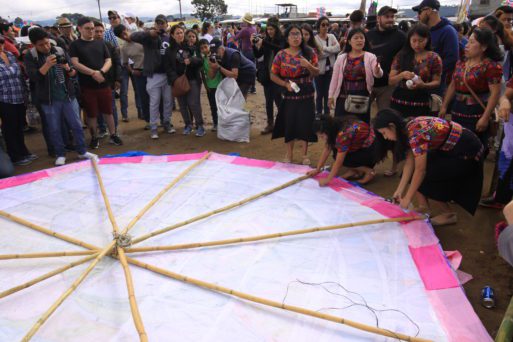
One group of kite-makers works to raise their kite for display.
Credit: Brianna Deutsch
While kites are commonly flown throughout Guatemala on the Day of the Dead, it is only the two towns of Santiago and Sumpango that have taken their kite traditions to a new level. Each year, dozens of groups in these towns spend months creating giant kites made out of tissue paper, that are then displayed in the graveyards on the Day of the Dead. These delicate kites reach heights of 60 feet and are supported by bamboo frames. They are elaborate works of art, often crafted with designs typical of Mayan clothing or images important in Mayan spirituality. But the fragile nature of tissue paper and glue that holds them together means that they quickly begin to rip apart when confronted by the fierce winds that are common in Guatemala that time of year. Within hours of the kites being raised to display, they begin to show wear and tear, and by the end of the day, most of the kites have gaping holes or are only tattered remains. The kites, which take thousands of hours to create, exist as beautiful, fleeting art for less than a day, mimicking the transitory nature of life. Their nature is ephemeral, as is ours.
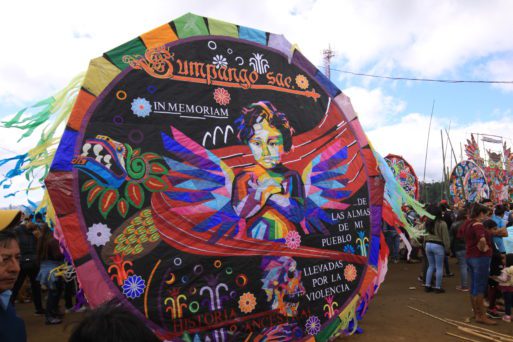
This kite honors those who were killed by violence.
Credit: Brianna Deutsch
The kites contain important messages beyond just a reminder of our own fleeting mortality. They also function to honor the past and fight for the future. Many kites are decorated with messages that instruct us to remember our ancestors and their ways of life, and images that harken back to Mayan spirituality and traditional clothing. The patterns celebrate traditional Mayan ways of life and preserve unique cultural heritages. At the same time, they also serve as billboards for important activist causes, with warnings to fight climate change, empower indigenous communities against exploitation, or protect vulnerable children. One such example is a kite made in Santiago that read, “Ojala que nunca te falta aire para respirar, fuego para calentarte, agua para beber, tierra para vivir en ella. Si no accionamos ahora nuestros nietos no tendrán nada de esto” (God willing that you never lack air to breathe, fire to warm yourself, water to drink, land to live in. If we don’t act now, our grandchildren will not have any of this). The designer of the kite, Edgar, explained in an interview with the author that he was inspired by global warming and environmental degradation, both locally and internationally.
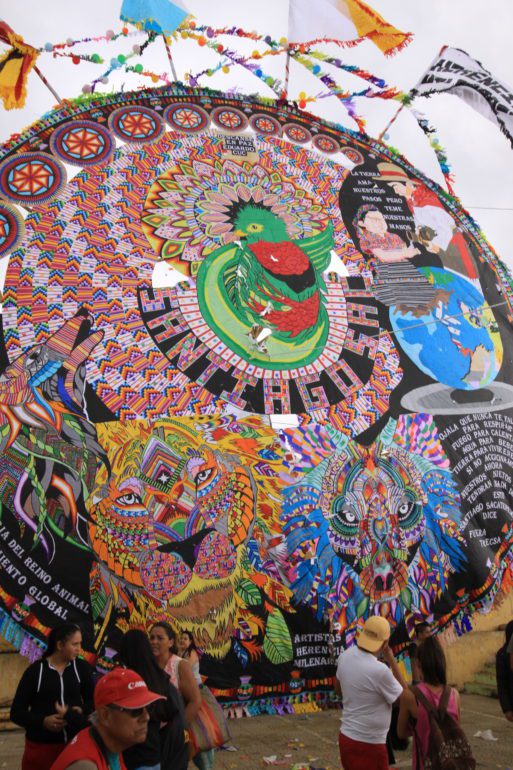
Edgar’s kite offers a warning for us to protect the environment.
Credit: Brianna Deutsch
The giant kites of Guatemala leave the viewer awe-struck by their beauty, by their fragility, and by the passion invested by their community in making them. They honor the dead while also calling the living to action.

 The Giant Kites of Guatemala Celebrate Day of the Dead
The Giant Kites of Guatemala Celebrate Day of the Dead


 Debating Medical Aid in Dying
Debating Medical Aid in Dying
 “Help Me, Helen”
“Help Me, Helen”















